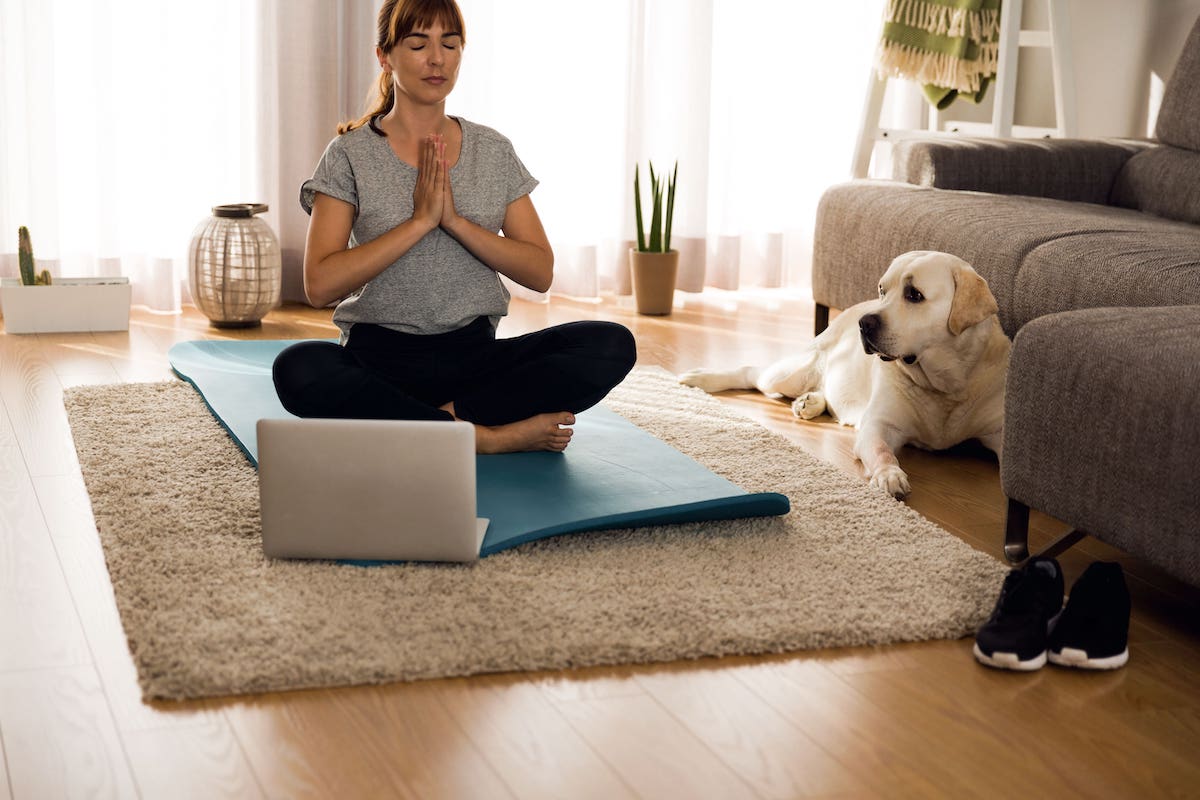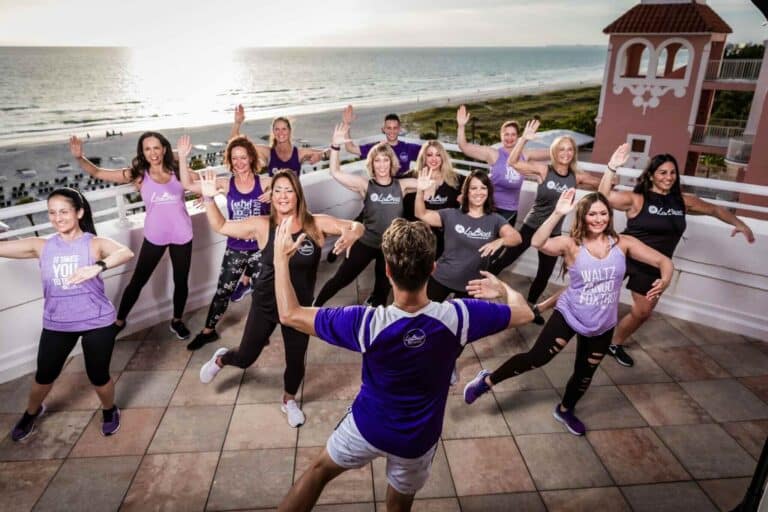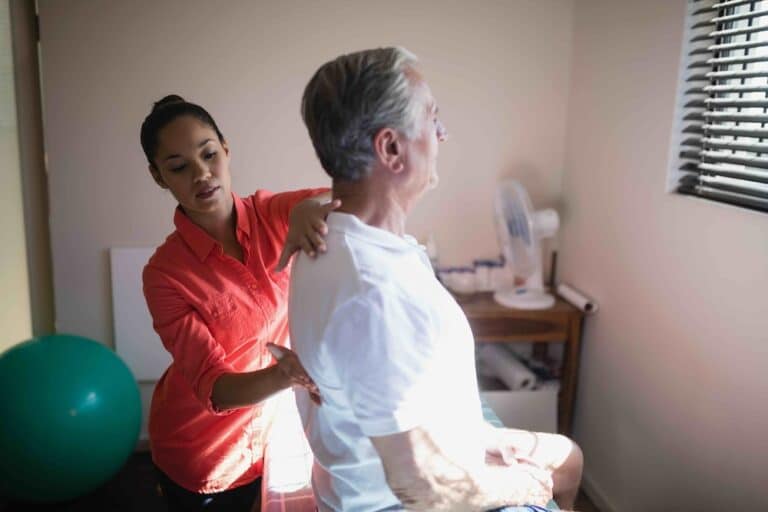Boost Your Physical Health, Mental Health, Emotional Health, and Social Health While Working From Home
During the COVID-19 pandemic, many people are staying indoors, avoiding other people, and are stressed, anxious, and frustrated as a result. During the summer of 2020, people were able to go outside, meet at a social distance, and in some states resume some ‘normal’ in-person activity. However, with the approach of the fall semester, with many students going back to school or planning to attend virtual classes, the looming question is:“How can I improve my physical, mental, emotional, and social health while working from home?” In this detailed guide, we’ll cover some tips, tricks, and strategies for students and anyone working from home to take care of their physical health, mental health, and emotional health this fall.
Strategies to Boosting Your Physical Health From Home
The Importance of Exercise: Staying active and healthy, even if it’s just walking or doing light in-room exercises
As it starts to get colder, and as gyms remain closed, it’s important to find activities you can do in your apartment, dorm, or house that will help you stay active and healthy. You don’t need to invest in hundreds of dollars of at-home gym equipment to stay in shape. Check out our ultimate list of homemade and alternative exercise equipment! The best thing to buy is a standard yoga mat to help reduce impact on your knees and legs as you’re doing exercises at home. These videos from Burnalong all feature great workouts that you can do from home with zero gym equipment needed.
- Full Body Workout by Liz Law
Full body class with cardio elements. This class is designed to tone, strengthen, and aid in weight loss. Come move with us for an hour as we target full body!
- Sitting too much? Let’s move! by Andrea Colabufo
Sedentary job? Try this quick 5 minute video at work every 1-2 hours! These movements with increase circulation and keep the fascia lines healthy! You will instantly feel energized!
- Sweat-Free 30-Minute Body Toner by Monica Pampell
This class activates ALL muscle groups without the sweat, so you can do it any time and return to work or life fully toned and sweat-free. Bonus: you’ll learn a lot.
Schedule workouts or healthy activity into your daily routine
Staying active doesn’t have to be an every once in a while thing. It’s been proven that regular, shorter bursts of activity lead to longer-term health benefits than putting 3 hours in at the gym once a week. Find 15-20 minute periods of time during your day either at the start of your day, between classes, or during study sessions to do some light exercise. Even just going for a brisk walk every day can help you stay healthy.
Stretching and standing in regular intervals
We’ve all been there, studying or working until 2 or 3am (or 5 or 6am for some students – especially during finals). Cramming the last bit of information into our heads right before a big exam may be better for our grades, but it’s terrible for our bodies. This fall, schedule regular stretch & stand breaks during long blocks of study time so you can keep blood flowing and avoid painful muscle aches and muscle cramps.
Studying may not take the same physical toll on your body as running a marathon, but the preparation and execution actually have a lot in common. Staying hydrated, regularly stretching and moving your body by standing and going for short walks, and being careful to avoid overexerting yourself during quick sprints.
Do your best to keep an ergonomic work space available, no matter where you’re working or studying
This is one that I’ve learned the hard way, but now that I’m aware of it has saved me many painful nights. Your workspace layout and position can play a huge role in developing (or avoiding!) physical pain and muscle aches over long periods of time. Sitting hunched over on your laptop all day is bound to develop neck pain, shoulder tension, and back aches. These are 3 quick tips to improve the ergonomics of your workspace, whether it’s your desk, kitchen table, or couch.
- Screen height matters
- Position your laptop or monitor screen so the top of the screen matches your eye height. This means your neck won’t have to strain as far down as you’re looking at the screen, and over time you’ll be less likely to develop neck pain.
- Take care of your hands
- Typing and holding a keyboard all day incorrectly can lead to wrist and hand pain over time (trust me!). One of the best ways to avoid this is to make sure your chair is lined up correctly to your keyboard. You want to get your elbows as close to a right angle to the desk & keyboard height so your wrists are straight as possible to limit the strain on your wrists and hands. It may seem like a small adjustment, but it definitely makes a difference over time!
- The right light is important
- Sitting in a dim library room with your face as close as possible to a textbook is the direct opposite of the advice here. You want to be in a well lit area with as much natural light as possible. When natural light isn’t available, either because you’re studying at 1am or your apartment window was like mine in New York City and faces a 20-story building, you want to surround yourself with as much warm artificial light as possible. This will limit your need to squint or hold your face right up against your screen or textbook, and keeps eye fatigue at bay. Another great solution here for those of us glued to screens all day is to invest in a pair of blue light glasses that are available at major retailers or from some direct to consumer brands like Felix Gray to reduce digital eye strain.
Diet and Nutrition is important as you’re looking ahead towards a full semester of class and working from home.
It may be tempting to scarf down whatever is cheap, easily available, and quick, but investing in your diet and nutrition pays huge dividends down the road.
With some quick modifications to any existing diet, you can help sustain energy for longer without relying on that 5th (or 10th) cup of coffee. These are some quick tips for any student diet that will help you stay energized and healthy this semester.
- Eating a fiber rich diet helps you stay fuller for longer to avoid snacking. These are some fiber rich foods you can start to incorporate into your diet:
- Fruits like pears, bananas, and apples
- Vegetables like carrots, broccoli, and artichokes
- Avocados are also high in fiber, healthy fats, and vitamins
- Switching to tea in the afternoon helped me limit my coffee intake and reduced the likelihood of a caffeine crash for me during my busier semesters. If you’re interested in a high-caffeine tea that is designed to boost your energy while limiting crashes, I personally enjoy this local Baltimore-based brand: Zest Tea.
- Limiting carbs or consciously choosing 1-2 meals a day to enjoy your carbs is a small tweak you can make that can help reduce weight gain without removing a food group entirely from your diet. If you have toast in the morning or a sandwich for lunch, consider making a big leafy salad for dinner to round out your nutrients and limit your carb intake for the day.
- Healthy snacking is possible – and encouraged! With so many great options for snacks, it’s a wonder I used to sit down with a bag of M&Ms and chips before a late night study session. Since then, I’ve learned that having a big bag of trail mix or fresh fruit next to me would have given a much more sustained mental energy during those late nights. Vegetables like carrots are also great snacks since they still give that satisfying crunch with a much lower calorie count and are high in fiber.
Burnalong Instructor and Precision Nutrition Master Coach Tina Fritsch of Fit By Design recently posted a nutrition video on Burnalong with 20 foods to fuel your energy levels and boost mental performance. From Tina: “Food choices can make a difference in terms of your energy level. Foods that don’t boost your energy through the day are generally processed foods, generally white, sweet, or you can find them in a bag or a box. If you’re trying to increase your energy levels, you want to start making some different choices. Start where you’re at, add one in, add two in, and see what works!“
These are 5 foods to boost your energy and mental performance.
- Water
- We’re made up of a lot of water, it does so much – if you’re feeling really tired start by having a glass of water!
- Bananas
- An excellent source of carbs, these give you lots of energy throughout the day.
- Eggs
- A good whole source of protein, eggs give a slow release of energy over time.
- Lean chicken
- Protein takes the longest for your body to break down so it keeps you fuller longer. Add lean chicken to your salad for an extra energy boost!
- Air popped popcorn
- Avoid microwaved popcorn, but air popped popcorn contains lots of fiber, and keeps up a steady release of energy.
Staying active and exercising can benefit your mental health, too.
Many studies show that regular exercise helps reduce depression and anxiety while boosting mood and energy levels by releasing ‘feel good’ endorphins.
In addition to those benefits, when you build exercise into your daily routine and stick with it you increase your motivation and ability to layer on additional routines as a result. When I was in school and regularly meeting friends at the gym, it was easier to stick with my other goals and routines like drinking enough water, spending enough time at the library, and eating healthier. Goal setting and working up to additional milestones with physical activity is a great springboard to improving your mood and boosting motivation, as well as plenty of other mental health benefits!
Tips for Mindfulness, Breathing and Staying Present
20 years ago, if someone told you to just stop what you’re doing, close your eyes, and take some deep breaths, you’d look at them like they were crazy. Now, mindfulness has entered the mainstream as a proven way to reduce stress and boost mental resilience. As students, it’s important to stay mindful through the daily stresses of class and exams. During the global pandemic, stress is at an all time high, and incorporating the practice of mindfulness can help alleviate stress for students and employees.
These are some beginner tips for mindfulness from Burnalong instructor and Mind-Body Stress Relief Expert, Risa Gaull.
- “Life can get pretty crazy, so we all need some way to be able to calm down and connect with our own truth and inner core of clarity and calmness so we can bring our full presence and energy to whatever we do in our life.“
- “Practice mindfulness so you can enjoy your life more even when the plate is very full and there’s too much to do and too little time. The #1 key is to really just become present in your body because so often we’re up in our heads, literally, we’re not even aware we have a body.”
- “The mind can get going pretty fast, and it’s usually either way out in the future or somewhere in the past, and we’re never really fully present or in the moment. That really is the key to being calm, centered, and being most effective in your life.“
- “You may think “I don’t have time to take time out to calm down, you can take literally 60-seconds to stop and just tune in and breathe, you’ll find you can get through your day much more effectively, calmly, with more ease and more joy. Give yourself the time you need“
Taking Care of Your Emotional and Social Health
Emotional health and social health are important factors to boosting your overall wellbeing, and these have become even more vital to focus on over the past few months as people are feeling more stressed, isolated and lonely than ever. Maintaining connection with others, whether they are fellow students, friends, or family, is a great way to boost your emotional health and help you feel connected.
These are some tips and strategies to help you stay social and connected online.
Scheduling time with friends
- Back to the schedule we’ve been talking about: it’s much harder to cancel plans when it’s scheduled. Setting a hangout time or a virtual call with friends on your calendar may feel weird at first, but it helps boost accountability so you’ll keep your plans. Now that most people aren’t going out to see friends, it may feel easier to cancel plans or push them to a ‘less stressful’ time, but spending time with friends (even virtually) can help reduce stress and rejuvenate some vital energy needed to help power through the stressful semester.
Making time to connect with family and loved ones
- It may seem similar to the first tip, but connecting with your family and loved ones is another great way to boost emotional health and stay social during this time. Especially for older relatives, who are experiencing more isolation and are at a higher risk for depression, hearing your voice or seeing your face on a screen can mean the world for them. Spend some time during your busy week speaking to one of your relatives and see for yourself the added benefit you’ll feel after the call. If you don’t feel like calling your own family members, feel free to call my grandma anytime – she’d love to speak with you (or anyone, really).
Finding activities you can do together with friends or family whether socially distant in person or online
- Besides for phone calls, texting, and video calls, there’s other social activities you can do with your friends and families to help stay healthy, social and connected online.
Online exercise and classes that keeps you healthy and connected – like Burnalong
Burnalong is an online health and wellness platform that features 1000’s of online classes in physical, mental, and emotional health across 45+ wellness categories like yoga, cardio, nutrition, mindfulness, stress management, and more. On Burnalong, you can take these classes in real time with your family and friends – see and hear each other live on the screen. Burnalong combines the benefits of boosting physical health, mental health, emotional health, and social health from the same convenient app and website.
With 100’s of local instructors teaching classes for all ages, interests, and skill levels, there’s something for everyone on Burnalong. Invite your friends, fellow students, and family members to join you for live and on-demand classes from the comfort of your dorm, apartment, or house. Interested in getting started? Visit go.Burnalong.com/register to get started on Burnalong today!
Are you looking to bring Burnalong to your company or university? Visit this page to speak with a Burnalong Wellness Consultant!





